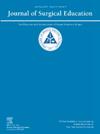微创妇科外科的培训路径:住院医师和匹配的FMIGS学员的分析
IF 2.1
3区 医学
Q1 EDUCATION, SCIENTIFIC DISCIPLINES
引用次数: 0
摘要
目的了解妇产科(OBGYN)住院医师微创妇科外科(MIGS)的培训环境,以及获得微创妇科外科(MIGS)奖学金的教育途径。设计:观察性横断面研究,利用研究生医学教育认证委员会(ACGME)关于妇产科住院医师项目以及ACGME和aagl认证的妇科奖学金的数据。结果包括有附属FMIGS奖学金或MIGS部门的住院医师项目的比例,在此类项目中接受培训的FMIGS研究员的数量,以及五年内住院医师向奖学金过渡的趋势。不适用,因为这是一项针对美国所有住院医师项目的调查研究。所有美国ACGME认证的妇产科住院医师项目以及ACGME和aagl认证的妇科奖学金,从2022年到2026年都包括在内。FMIGS研究员是根据AAGL公布的2022年至2026年奖学金年度公开的年度匹配列表确定的。结果在298个妇产科住院医师项目中,46个(15%)有附属FMIGS奖学金,少于妇科肿瘤学( = 74)、泌尿妇科和盆腔重建外科( = 58)和生殖内分泌与不孕症(REI)( = 51)。另外22个实习项目(9%)有一个位于同一地点的MIGS部门,但没有奖学金。从2022年到2026年,227名居民获得了FMIGS奖学金。其中,53%的人接受过FMIGS项目的住院医师培训,9%的人接受过MIGS部门的住院医师培训,但没有FMIGS奖学金。总体而言,在研究期间,35%的住院医师项目至少有一名住院医师与FMIGS匹配,这表明项目产出存在差异。总的来说,与同一地点的FMIGS奖学金或MIGS分部合作的住院医师项目似乎可以提高奖学金匹配的成功率。本文章由计算机程序翻译,如有差异,请以英文原文为准。
Training Pathways for Minimally Invasive Gynecologic Surgery: An Analysis of Residencies and Matched FMIGS Trainees
Objective
To better understand the training environment in Minimally invasive Gynecologic Surgery (MIGS) among obstetrics and gynecology (OBGYN) residency programs and the educational pathway to securing an FMIGS (Fellowship in MIGS) fellowship.
Design
Observational, cross-sectional study utilizing data from the Accreditation Council for Graduate Medical Education (ACGME) for OBGYN residency programs and both ACGME- and AAGL-accredited gynecologic fellowships. Outcomes included the proportion of residency programs with affiliated FMIGS fellowships or MIGS divisions, the number of FMIGS fellows who trained at such programs, and trends in residency-to-fellowship transitions over a five-year period.
Setting
Not applicable as this was a survey study for all residency programs in the United States.
Participants
All United States-based ACGME-accredited OBGYN residency programs and ACGME- and AAGL-accredited gynecologic fellowships from 2022 to 2026 were included. FMIGS fellows were identified using publicly available annual match lists published by the AAGL for fellowship years 2022 to 2026.
Results
Among 298 OBGYN residency programs, 46 (15%) had an affiliated FMIGS fellowship, less than gynecologic oncology (n = 74), Urogynecology and Reconstructive Pelvic Surgery (URPS) (n = 58) and Reproductive Endocrinology and Infertility (REI) (n = 51). Another 22 residency programs (9%) had a co-located MIGS division without a fellowship. From 2022 to 2026, 227 residents matched into FMIGS fellowships. Of these, 53% trained at residencies with FMIGS programs, and 9% trained at residencies with MIGS divisions but no co-located FMIGS fellowship. In total, 35% of residency programs had at least one resident match into FMIGS during the study period, indicating variability in program output.
Conclusions
Overall, residency programs with co-located FMIGS fellowships or MIGS divisions appear to enhance fellowship match success.
求助全文
通过发布文献求助,成功后即可免费获取论文全文。
去求助
来源期刊

Journal of Surgical Education
EDUCATION, SCIENTIFIC DISCIPLINES-SURGERY
CiteScore
5.60
自引率
10.30%
发文量
261
审稿时长
48 days
期刊介绍:
The Journal of Surgical Education (JSE) is dedicated to advancing the field of surgical education through original research. The journal publishes research articles in all surgical disciplines on topics relative to the education of surgical students, residents, and fellows, as well as practicing surgeons. Our readers look to JSE for timely, innovative research findings from the international surgical education community. As the official journal of the Association of Program Directors in Surgery (APDS), JSE publishes the proceedings of the annual APDS meeting held during Surgery Education Week.
 求助内容:
求助内容: 应助结果提醒方式:
应助结果提醒方式:


